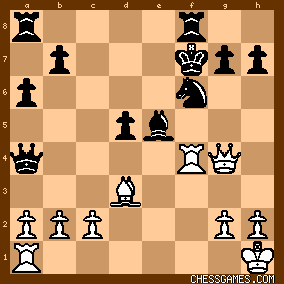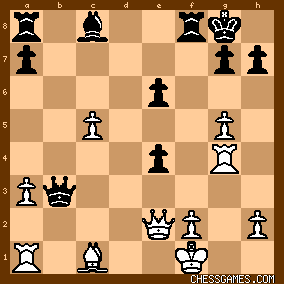| Bogoljubov - Nimzowitsch (1920) |
|
This was a match of four games between the emerging masters Efim Bogoljubov (aged 31) and Aron Nimzowitsch (aged 33). Their progress had been held back for half a decade by the disaster of the First World War, but they would achieve great tournament successes in the 1920s. The two had only played once before, with Nimzowitsch winning with Black (Bogoljubov vs Nimzowitsch, 1914). The match was played between the 1st and the 7th of September 1920 (1) in the rooms of the Stockholm Schacksällskap, the Grand Hôtel in Stockholm. The hotel, situated on the waterfront near to the Royal Palace, was and continues to be a premium luxury hotel. At that time, Sweden offered a rare opportunity for grandmaster chess. Neutral in the First World War, the demand for Swedish exports in a seller's market allowed the Swedes to pay their high national debt off and lower their interest rates. The newly wealthy country could afford the luxury of hosting chess tournaments when other economies were struggling to recover. (2) Bogoljubov
Bogoljubov had barely broken into the master ranks before the First World War. His best results were first at Łódź (1913) (ahead of Georg Salwe), and second to Karel Hromadka in the All Russian Amateur Tournament in Liepāja (1913). At the All Russian Master's Tournament in January 1914, he came 8th (9½ points), behind the winners Alexander Alekhine and Nimzowitsch (13½ points). Although arrested and held in Germany during the First World War, Bogoljubov had the opportunity to play against the interned Russian masters, who organised their own tournaments. In 1920, Bogoljubov had been in Sweden for over a year (along with Rudolf Spielmann, Richard Reti and a little later Akiba Rubinstein). He played in the J. G. Schultz Memorial (Stockholm) in November 1919, the Four Master's Tournament (Stockholm) in December 1919, a match of 12 games against Rubinstein in January 1920 (losing 5½ to 6½), and a match in Kristianstad against the Swedish player Arthur Hakansson. (3) Nimzowitsch
Nimzowitsch's security and opportunity to build a career was destroyed due to the First World War. Latvia was invaded by the German and then by Red Army when it struggled to become an independent country. There would not be peace until the Latvian–Soviet Peace Treaty was signed on 11th August 1920. The early 1920s were a precarious time for Nimzowitsch. He needed to restore his status as a master urgently. In 1920, he was 33 years old and with little money left he had to secure a living in a foreign country. He had been grinding out an existence by giving simultaneous displays and lectures in Latvia. (4) It would not be until Copenhagen (1923) and Karlsbad (1923) that he began to play in and win major tournaments which took him to third place in the rankings by the end of the decade. Nimzowitsch's first grandmaster tournament after the war was in Gothenburg (1920) (2-20 August). He had not played tournament chess since St. Petersburg (1914). Visibly nervous, he played poorly, lost his last three games, and finished 12th. Twelve days later, he opened this match against Bogoljubov, who had come third at Gothenburg behind Reti and Rubinstein. It was to be a hard fought match revealing that Nimzowitsch's play was not yet in a good or stable form. It would take another two years during which his "hypermodern style" was honed. His Game 1 victory was to be his only one in the match. In the next three games his play became less exact as he progressed into the later middlegame. The progress of the match 1 2 3 4
1 Bogoljubov 0 1 1 1 3
2 Nimzowitsch 1 0 0 0 1
Progressive score: 1 2 3 4
1 Bogoljubov 0 1 2 3
2 Nimzowitsch 1 1 1 1
Nimzowitsch was White in the odd numbered games.The games
Game 1. In the first game, Bogoljubow had Black and played aggressively. He then overstepped the mark, blundered and Nimzowitsch was able to finish him off with a coup de grâce. 
click for larger view22.Rxf6!
Game 2. The second game was a long grind. Bogoljubov accrued a small advantage out of the opening, having two bishops for a Rook and two pawns. The two prelates were not very beneficial until Nimzowitsch began to play inexactly in the late middle game as he suffered in the toils of time trouble. Eventually, Nimzowitsch had two pawns for a Bishop but could not hold a difficult but definitely not lost ending. Game 3. Nimzowitsch played his favourite Advance Variation against Bogoljubov's second deployment of the French Defence, but was unable to secure an advantage with the White pieces as Bogoljubov dominated the centre. Bogoljubov secured the game with a dramatic 
click for larger view28...Ba6! Nimzowitsch now to had win his next game with Black. Game 4. Nimzowitsch used an old favourite: the Philidor Defence. He equalised without any real difficulty. As in Game 2, his play deteriorated in the late middle game, and Bogoljubov was able to avenge his humiliation in the first game with his own spectacular Rook sacrifice: 
click for larger view43.Rxg6!
Notes
(1) The start and end dates are given in Tidskrift för Schack, vol. 26, Nr. 11-12 (http://www.schack.se/tfsarkiv/histo...), p. 193. Nimzowitsch annotated the first game and Bogoljubov the third and fourth games of the match in this edition.
(2) Sweden - Economic Growth and Structural Change, 1800-2000, by Lennart Schön (https://eh.net/encyclopedia/sweden-...).
(3) Aron Nimzowitsch: On the Road to Chess Mastery, 1886-1924, by Per Skjoldager and Jørn Erik Nielsen, p. 277.
(4) Aron Nimzowitsch: On the Road to Chess Mastery, 1886-1924, pp. 274-275. Original collection and text by User: Chessical. Thanks to: User: MissScarlett, User: Tabanus and User: zanzibar for reading over the text and suggesting improvements and additional material.
|
|

|
| Sep-20-18 | | RookFile: Fortune favors the bold. Nimzo was always trying to prevent his opponent from doing something, but Bogo tended to go for the throat. |
|
Nov-02-18
 | | offramp: Two famous hypermoderns, both inventors of “-Indian” defences, and yet three of the 4 games were 1. P-K4, and one was a Philidor! |
|
| Nov-02-18 | | JimNorCal: Nimzo's win: only 22 moves |
|
| Nov-02-18 | | paavoh: @offramp: Naturally, both were hiding their prep. |
|
Nov-03-18
 | | keypusher: <offramp: Two famous hypermoderns, both inventors of “-Indian” defences, and yet three of the 4 games were 1. P-K4, and one was a Philidor!> Not to be a killjoy, but as <Chessical> points out in his excellent introduction, Nimzowitsch hadn't fully developed his hypermodern style by 1920, and the Philidor was one of his specialties (with a hypermodern approach -- ...exd4 and play against the center, an approach he credited to Steinitz in his games against the Ruy Lopez). Nimzowitsch always played 1.e4 a lot, especially at this point in his career. In St. Petersburg 1914, for example, he played 1.e4 in every game with white. He was dry and technical -- here's an example. Nimzowitsch vs Gunsberg, 1914 Bogoljubov is occasionally described as a hypermodern, but I don't know why. Go to his player page and look at this favorite openings. Or see this game. Bogoljubov vs Tarrasch, 1925 |
|
|
|
|
NOTE: Create an account today
to post replies and access other powerful features which are available only to registered users.
Becoming a member is free, anonymous, and takes less than 1 minute! If you already have a username,
then simply login login under your username now to join the discussion.
|
Please observe our posting guidelines:
- No obscene, racist, sexist, or profane language.
- No spamming, advertising, duplicate, or gibberish posts.
- No vitriolic or systematic personal attacks against other members.
- Nothing in violation of United States law.
- No cyberstalking or malicious posting of negative or private information (doxing/doxxing) of members.
- No trolling.
- The use of "sock puppet" accounts to circumvent disciplinary action taken by moderators, create a false impression of consensus or support, or stage conversations, is prohibited.
- Do not degrade Chessgames or any of it's staff/volunteers.
Please try to maintain a semblance of civility at all times.

NOTE: Please keep all discussion on-topic.
This forum is for this specific tournament only. To discuss chess or this site in general,
visit the Kibitzer's Café.
|
Messages posted by Chessgames members
do not necessarily represent the views of Chessgames.com, its employees, or sponsors.
All moderator actions taken are ultimately at the sole discretion of the administration. |
Spot an error? Please suggest your correction and help us eliminate database mistakes!
Copyright 2001-2025, Chessgames Services LLC
|




![]()
